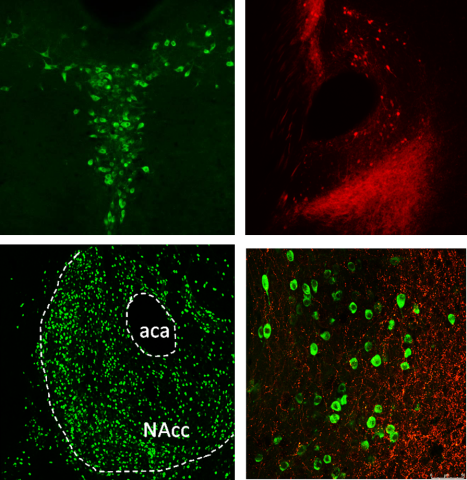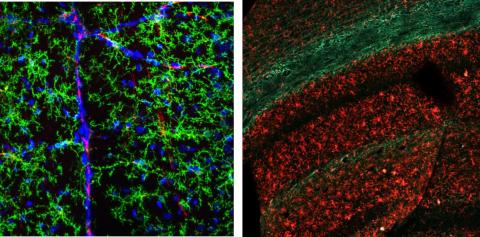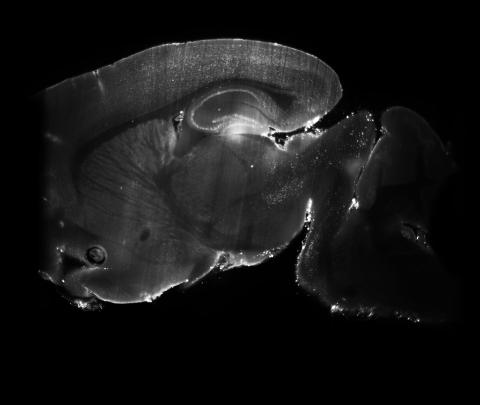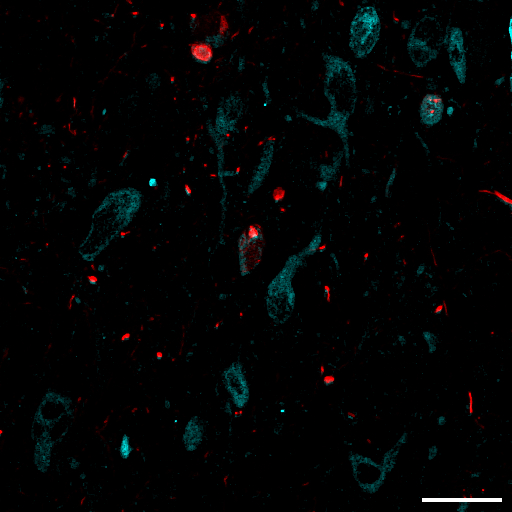Breadcrumb
- Home
- Research Projects
Research Projects




Serotonin inputs the nucleus accumbens in ethanol dependence
Serotonin (5-HT) neurons a diverse array of physiological functions including mood regulation, sleep, feeding behavior, reward processing and aversive learning. We are ultimately interested in 5-HT circuits that drive compulsive alcohol and drug seeking behavior, which involves a shift in hedonic homeostasis as well as an increase in brain stress systems that promote anxiety and dysphoria. Currently, we are utilizing optogenetic and chemogenetic tools to dissect out anatomically- and neurochemically-defined populations of 5-HT neurons in the DRN that promote negative affective states during alcohol withdrawal, which in drives compulsive alcohol drinking. We are also investigating the role of 5-HT inputs to the nucleus accumbens (NAcc) in the hedonic shift that drives escalations of alcohol drinking after chronic intermittent alcohol. It is generally thought that serotonin can inhibit phasic dopamine release in the NAcc, but the precise neural mechanisms involved have yet to be delineated. We are currently investigating whether chronic alcohol enhances 5-HT receptor signaling in the nucleus accumbens, and whether this can lead to deficits in dopaminergic signaling and reward processing during alcohol withdrawal.
Neuroimmune interactions in the dorsal raphe in adolescent alcohol exposure
Chronic ethanol during adolescence has been shown to induce microglial activation in the DRN and reduce 5-HT expression in rats. We are currently investigating the causal relationship between microglial activation and 5-HT downregulation using mouse models of adolescent ethanol exposure. We are ultimately interested in determining how microglia can alter circuit function in the DRN and alter downstream circuits that modulate reward seeking and affective behaviors.
PFC modulation of serotonin signaling in schizophrenia
Maternal immune activation induces behavioral deficits in social interaction, sensorimotor gating, and latent inhibition in mice that are reminiscent of human schizophrenia. Glutamatergic inputs from the prefrontal cortex (PFC) to the DRN are known to modulate the activity of 5-HT neurons, which in turn regulate social behavior. We are currently investigating whether PFC inputs to the DRN are disrupted after maternal immune activation and how 5-HT transmission is altered in the DRN and other downstream regions that have been implicated in social behavior.
Role of the dorsal raphe in neural degeneration associated with tauopathy
Alzheimer’s disease (AD) is a devastating neurodegenerative disease that leads to a slow decline in memory and cognitive function. AD is characterized by the intracellular inclusions of microtubule-associated protein tau in neurofibrillary tangles (NFTs), which are thought to play a causative role in neurodegeneration. Earlier studies report that NFTs occur early on in DRN, which contains a large number of 5-HT) neurons that project widely throughout the brain. The accumulation of abnormally phosphorylated tau protein in 5-HT neurons has been found in mice expressing human isoforms of tau (htau) that develop cognitive deficits similar to those seen in AD. We are currently investigating whether chronic ethanol may accelerate neurodegeneration in AD, possibly by enhancing tau accumulation in 5-HT neurons and tau propagating throughout the rest of the brain.